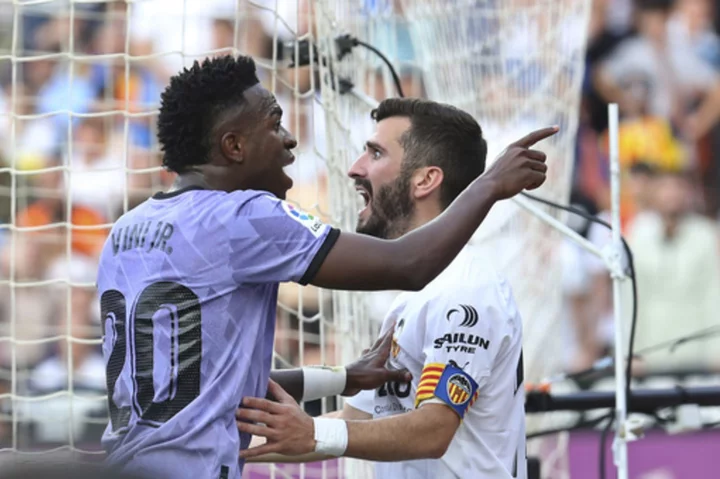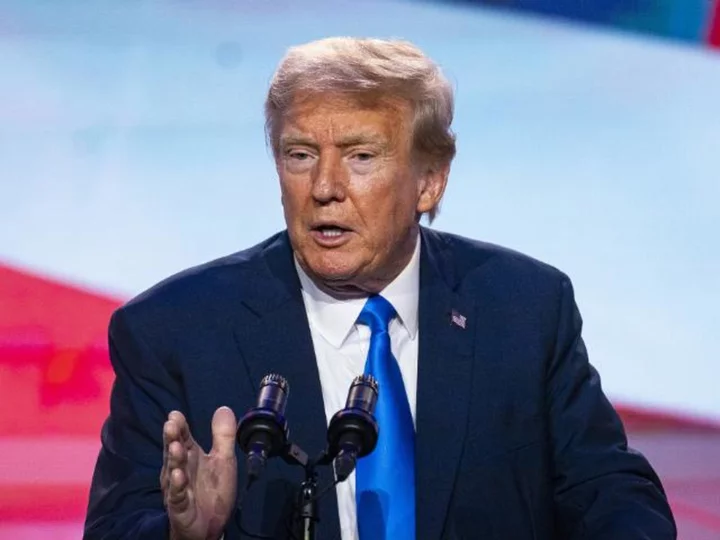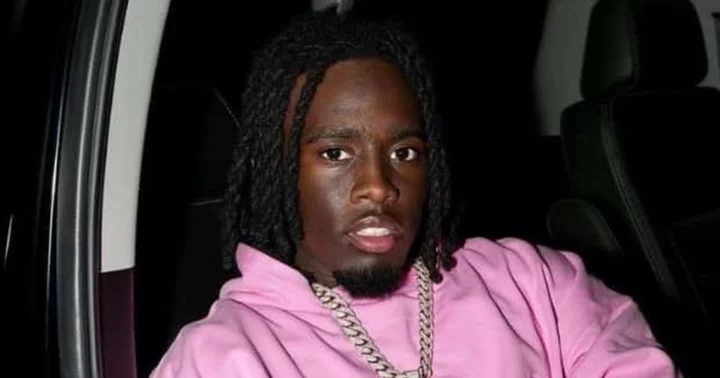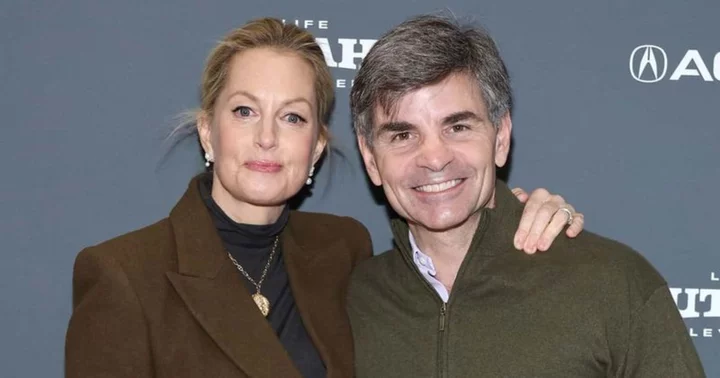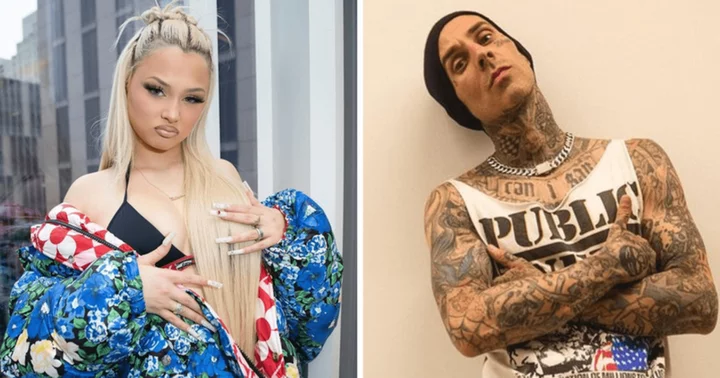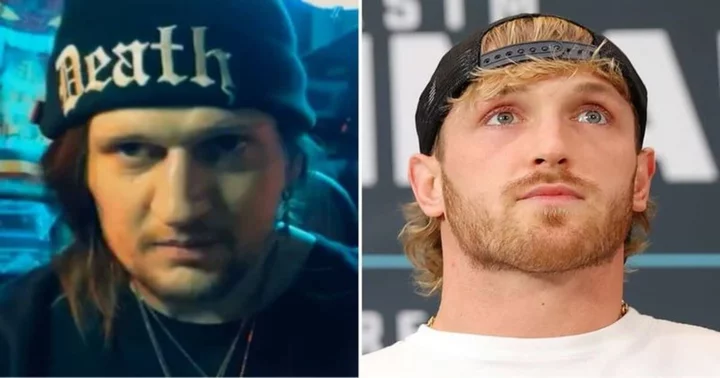MADRID (AP) — Hanging from a highway bridge in Madrid, an effigy of one of the world’s most famous Black soccer players stands as a graphic reminder of the racism that sweeps through European soccer.
In truth, the signs are everywhere.
In Italy, where monkey chants swirled around the stadium in April as a Black player celebrated a goal. In England, where a banana peel thrown from a hostile crowd during a game in north London landed at the feet of a Black player after he scored a penalty. In France, where Black players from the men’s national team were targeted with horrific racial abuse online after they lost in last year's World Cup final.
Go outside Europe and you’ll find them, too.
In Australia, where there were monkey noises and fascist chanting during last year’s Australia Cup final. In South America, where matches in the continent’s biggest competition, the Copa Libertadores, have been blighted by monkey chants. In North Africa, where Black players from visiting teams from sub-Saharan Africa have complained of being targets of racist chants by Arab fans.
The manifestation of a deeper societal problem, racism is a decades-old issue in soccer — predominantly in Europe but seen all around the world — that has been amplified by the reach of social media and a growing willingness for people to call it out. And to think that it was only 11 years ago that Sepp Blatter, then president of soccer governing body FIFA, denied there was any racism in the game, saying any abuse should be resolved with a handshake.
The Black player currently subjected to the most vicious, relentless and high-profile racist insults is Vinícius Júnior, a 22-year-old Brazilian who plays for Real Madrid, arguably the most successful soccer team in Europe.
It was around the neck of an effigy of Vinícius that a rope was tied and the figure hung from an overpass near Madrid’s training ground in the Spanish capital in January. It was Vinícius who, two weeks ago in perhaps a defining incident for the Spanish game, was reduced to tears during a match after confronting a fan who called him a monkey and made monkey gestures toward him.
It’s Vinícius who is emerging as the leading Black voice in the fight against racism, which continues to stain the world’s most popular sport.
“I have a purpose in life,” he said on Twitter, “and if I have to keep suffering so that future generations won’t have to go through these types of situations, I’m ready and prepared.”
Vinícius' biggest concern is that Spanish soccer authorities are doing little to stop the abuse, leading to racism being an accepted part of the game in a country where he has played since he was 18.
Indeed, federations around the world have been too slow — in some cases, apparently unwilling — to equip themselves with the powers to sanction teams for the racist behavior of their fans, despite being given the autho https://apnews.com/article/soccer-racism-boateng-fifa-9c6a7d1038986a5cfae742c59f02b8a9 rity by FIFA to do so since 2013.
Fines? Sure. Partial stadium closures? OK. But more stringent punishments, like point deductions or expulsion from competitions? They are typically reserved for matters such as financial mismanagement, not racial abuse of players.
The result is frustration and a sense of helplessness among Black players and those wanting to protect them. Asked what he expects to happen after the Vinícius incident, Real Madrid coach Carlo Ancelotti said: “Nothing. Because it has happened lots of times and nothing happens.”
Anti-racism campaigns and slogans are welcomed but increasingly viewed as tokenism, especially when fines handed to clubs or federations for racial abuse committed by fans often are so pitiful.
Take the juxtaposition, in 2012, of European governing body UEFA handing the Spanish soccer federation a $25,000 fine for fans directing racial abuse at a Black player for Italy during the European Championship with, around the same time, a Denmark player getting fined five times that amount for revealing underpants with the name of a bookmaker on it.
Experts believe the global outrage, widespread reaction and outpouring of support for Vinícius following his latest abuse could mark a turning point in the fight against racism in Spain. It certainly struck a chord in Brazil, where there were protests outside the Spanish Consulate in Sao Paulo, while the Spanish league is now seeking to increase its authority to issue sanctions. Its protocol up to now has been to detect and denounce incidents and pass evidence to courts, where cases are typically shelved.
Jacco van Sterkenburg, a professor of race, inclusion and communication in soccer and the media at Erasmus University in Rotterdam, said explicit racism in stadiums is more accepted and normalized in some parts of Spanish and southern European soccer culture compared to places like England and the Netherlands, where the media, former players and soccer federations have openly addressed the issue.
“When, as a football association, you don’t take a firm stance against it and you don’t repeat that message time and time again, it will reappear,” Van Sterkenburg said in a video call. “You have to repeat the message that this isn’t allowed, this isn’t accepted."
"When nothing happens, you should still repeat this message. Some clubs have programs in place where they repeat the message, even when nothing happens. It sets the norm, continuously.”
Jermaine Scott, an assistant professor of history at Florida Atlantic University, told the AP that while overt racism is no longer a recurring problem in mainstream American sports, institutional racism is very much evident, reflected in the lack of coaches and executives through the sports landscape who are Black, Indigenous or people of color. He sees this same institutional racism in European soccer, too.
For Scott, a player like Vinícius might be at odds with European soccer's values.
“As soccer spread throughout the world, different cultures made the game their own, and instilled different values, like creativity and innovation, and importantly, joy, and some would even say freedom,” Scott said.
“So when a player like Viní Jr. plays with the classic Afro-Brazilian style, accompanied by the samba celebrations, it upsets the value system of European soccer, which has historically disciplined those who challenge such value systems.”
Soccer needs outside help with racism and gets it through anti-discrimination campaigners such as Kick It Out in Britain and LICRA in France. The Fare network, a pan-European group set up to counter discrimination in soccer, places undercover observers in crowds at Europe's biggest games to detect racist chants and extremist symbols on banners.
Fans also are increasingly likely to raise awareness of racist incidents by reporting them to federations and campaign groups or posting videos and photos on social media, with the material often used by authorities as evidence to punish perpetrators.
Then again, the growth of social media has its downsides when it comes to the amplification of racist abuse in soccer compared to previous generations, where it was mostly restricted to inside stadiums.
Now, people can fire off racist insults over their phone anonymously, directly to the accounts of the world's best players on Instagram and Twitter. That leads to the paradox of soccer players, eager to boost their brands, using the same platforms on which they are being abused.
As for the Black players themselves, some — such as Vinícius and others like Samuel Eto'o, Mario Balotelli and Romelu Lukaku — call out the abuse when they see it, intent on leading the fight against racism. That's something Paul Canoville, the target of racist insults as the first Black player of English club Chelsea in the 1980s, wishes he had done.
“They should say something right there and then,” Canoville said of Black players. “I didn’t at that time and I’ve had to learn from that. That’s something I teach to up-and-coming players now.”
Van Sterkenburg and Scott said more education and stronger punishments were vital in the ongoing fight to stamp out racism. That's also the opinion of a former World Cup winner who played in Spain and experienced similar abuse to Vinícius.
“Racism is ingrained, it’s something people are used to, it’s something that is passed from one generation to another,” said the player, who declined to be named because he's not allowed by his current employer to give interviews.
"People think it’s normal, something that is not wrong, so it’s hard to fight against that. And we can’t even say that it’s something that will get better with time, because it was the same thing many decades ago and nothing has changed.”
___
Douglas reported from Sundsvall, Sweden.
___
More AP soccer: https://apnews.com/hub/soccer and https://twitter.com/AP_Sports

